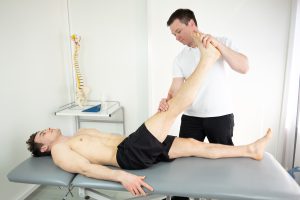
“Hello, I am 27 years old and I have hip arthritis.
I am a bit too young for surgery, so I’m wondering if there is any fluid that can be injected into the hip joint because I’m constantly in pain.
Cartilage regeneration or something… thank you.”
Arthritis in the hip at such a young age is usually the result of congenital deformity or trauma. Regardless of the initial cause, therapeutic protocols are similar and consist of three main parts.
The first is analgesic therapy, which can be done with traditional physiotherapy (laser, ultrasound, magnet, currents), but our experience shows that these methods are rarely successful. On the contrary, by combining techniques of manual therapy (mobilization and manipulation techniques, trigger point stimulation, fascial manipulation) with appropriate exercises and possibly radiofrequency therapy, we achieve a significantly better outcome.
After reducing pain, it is important to continue with basic exercises and gradually intensify and expand the program, aiming to maintain reduced pain levels or become pain-free.
Avoiding physical activities that further damage the cartilage is an important part of the rehabilitation process, especially when it comes to running, jumping, and sudden changes in direction.
Surgical procedures such as arthroscopy, “cleaning,” and “smoothing” of the cartilage, which are effective for the knee, are almost entirely useless for the hip and are rarely performed.
Unfortunately, a similar situation exists with injections into the joint. Hyaluronic acid, PRP, and the like have also not shown significant effects on hip arthritis. In this sense, if you wish, you can try instillations, but do not expect much from them. On the contrary, the basis of the entire recovery process is analgesic therapy combined with exercise.
It is worth noting that in this case, exercise not only aims to strengthen muscles and improve the flexibility of the joint and surrounding structures but also, by including aerobic “training,” the additional goal is to “condition” the remaining cartilage to become more resistant to physical stress. Based on this, we expect a reduction in pain through regular exercise.
